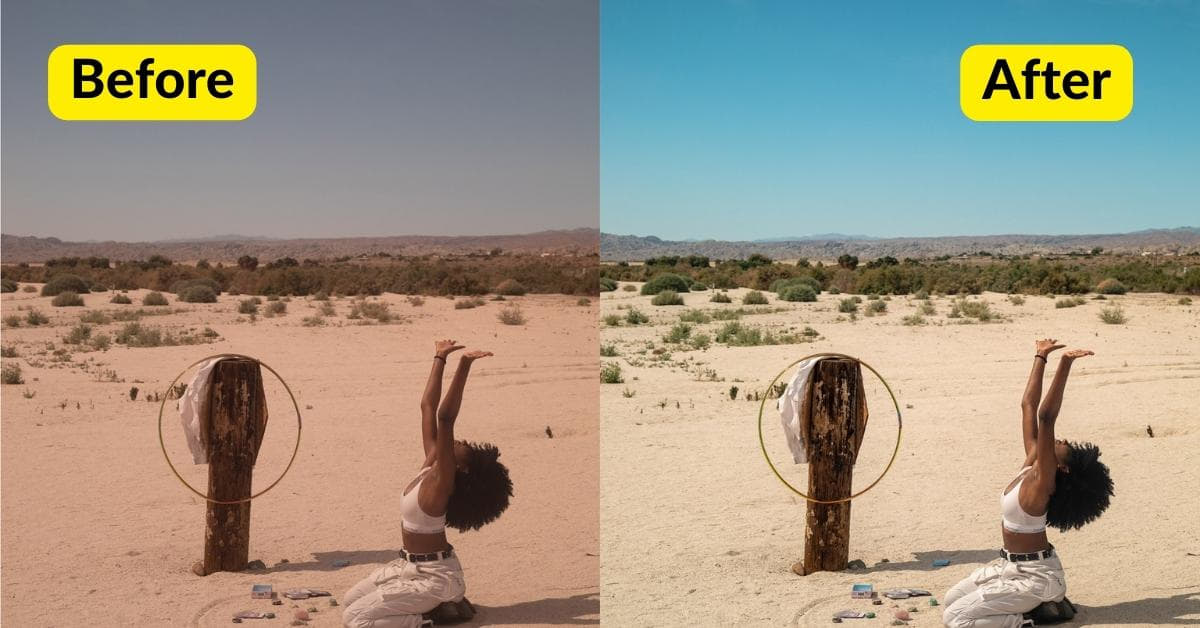In today’s visually-driven world, images play a crucial role in conveying messages and telling stories. Whether you’re a professional photographer, a social media influencer, or just someone who wants to share stunning photos, image color correction is a vital skill to have in your toolkit. In this article, we’ll explore the art of image color correction, its importance, techniques, and tools. By the end, you’ll be well-equipped to enhance the visual appeal of your photos and make them truly stand out.
Understanding Image Color Correction
Image color correction is the process of adjusting the colors in a photograph to achieve a specific look or to fix issues caused by lighting, camera settings, or other factors. It involves modifying elements like brightness, contrast, hue, and saturation to enhance the visual appeal of the image.
Why Image Color Correction Matters
Image color correction is essential because it can drastically improve the quality of your photos. It ensures that your images look as close to reality as possible or conveys the desired mood and message effectively. Correcting colors can make your photos more engaging and professional, whether you’re posting them on social media, using them in marketing materials, or preserving them as cherished memories.
Techniques for Image Color Correction
a. Adjusting Brightness and Contrast: Modifying brightness and contrast can significantly impact the overall look of an image. Brightness controls how light or dark an image appears, while contrast adjusts the differentiation between light and dark areas.
b. Tweaking White Balance: White balance ensures that the colors in your image appear natural. You can set it manually or use presets for different lighting conditions.
c. Enhancing Saturation and Vibrance: These settings affect the intensity of colors in your image. Saturation amplifies all colors, while vibrance adjusts the intensity of muted colors without over-saturating vibrant ones.
d. Fine-Tuning Hue and Saturation: Adjusting individual colors’ hue and saturation allows you to create unique and artistic effects. For instance, you can make a blue sky appear more vibrant or turn green grass into a lush, deep shade.
Tools for Image Color Correction
a. Adobe Photoshop: A powerhouse for professional image editing, offering extensive color correction capabilities.
b. Lightroom: Perfect for photographers, Lightroom simplifies color correction with presets and intuitive sliders.
c. GIMP (GNU Image Manipulation Program): A free, open-source alternative to Photoshop, offering a wide range of color correction tools.
d. Online Photo Editors: Many online tools like Canva and Pixlr provide user-friendly interfaces for basic color correction.
Tips for Effective Image Color Correction
a. Maintain a Natural Look: While it’s fun to experiment, it’s important to avoid over-editing. Strive for a natural look unless your creative vision calls for something different.
b. Experiment with Filters: Filters can give your photos a unique style or mood. Use them sparingly and with intent.
c. Batch Processing for Efficiency: If you have many images to correct, batch processing can save you time and ensure consistency.
Common Mistakes to Avoid
- Over-saturation: Avoid making colors appear unnaturally vibrant.
- Ignoring white balance: A proper white balance is crucial for realistic colors.
- Neglecting the histogram: Understanding the histogram helps with accurate color correction.
FAQs
What is image color correction?
Image color correction is the process of adjusting the colors in a photograph to achieve a specific look or to fix issues caused by lighting, camera settings, or other factors. It involves modifying elements like brightness, contrast, hue, and saturation to enhance the visual appeal of the image.
Why is image color correction important?
Image color correction is essential because it can drastically improve the quality of your photos. It ensures that your images look as close to reality as possible or conveys the desired mood and message effectively. Correcting colors can make your photos more engaging and professional, whether you’re posting them on social media, using them in marketing materials, or preserving them as cherished memories.
Can I correct image colors without professional software?
Yes, you can perform basic image color correction using free or online tools. While professional color correction software offers more advanced features, beginners can achieve satisfying results with simpler options like online editors and smartphone apps.
What are some quick tips for image color correction?
- Start with subtle adjustments.
- Make sure to maintain a natural look.
- Pay attention to white balance.
- Experiment with different tools and settings.
- Practice and learn from tutorials and guides.
How can I learn image color correction techniques?
There are numerous online tutorials, courses, and guides available. You can find video tutorials on platforms like YouTube, enroll in online courses on websites like Udemy, or explore blogs and forums dedicated to photography and image editing.
Conclusion
Image color correction is a valuable skill for anyone who wants to enhance the quality of their photographs and convey messages effectively through visuals. Whether you’re a professional photographer or a hobbyist, mastering the art of color correction can transform your images from ordinary to extraordinary. Experiment, learn, and practice, and you’ll soon be on your way to creating stunning, vibrant visuals that leave a lasting impression.
This page was last edited on 10 January 2024, at 5:43 pm
